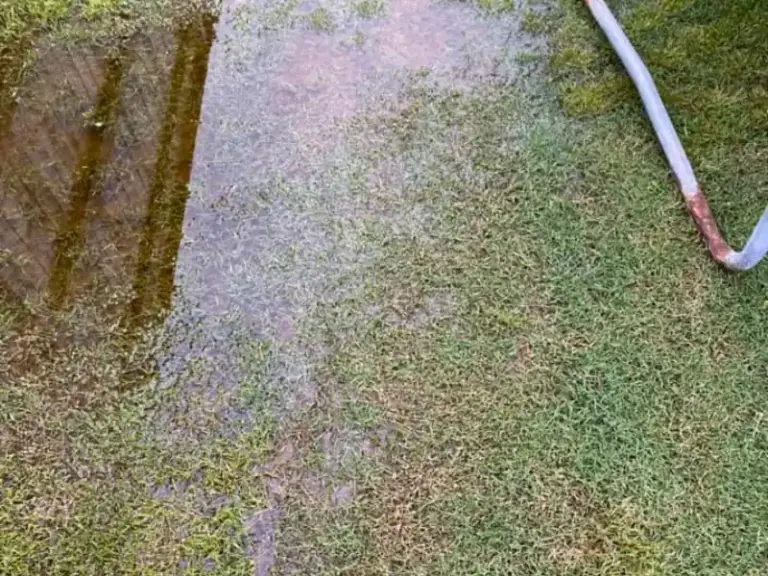Can You Add Lattice on Top of Existing Fence?
Lattice is made from wood or composite material (a combination of ground recycled plastic and natural wood).
Lattice panels form a grid of strips that are an inch wide, which aren’t steady and firm enough, making it a perfect fencing extension solution. In addition, it’s a suitable reinforcement material that can be used to add support to an unstable fence.
Read on to find out all you can about lattice fencing.
Can you add lattice to an existing fence?
When it comes to a fencing solution, two of your most significant concerns are if it’ll provide the privacy and security you want. One of the most popular fencing trends you may prefer is adding lattice, as an extension to an existing fence. Lattice fencing not only accentuates the beauty of an existing fence but also allows outdoor houseplants and other exterior décor additions to attach to it.
If partial privacy is your top goal and also want to restrict the movement of your pet or children, then adding lattice on top of your fence will do the trick. Installing it is easy since it’s like other fence panels. At the end of your project, you’ll have a fence that guarantees you privacy and adds a decorative look to your outdoor space.
How to put lattice over a fence
If you’re looking to build a lattice panel deck fence, decide if you want to buy a pre-built fence or go all DIY from the start to finish. Either way, the easiest hack to installing a fence is to focus on the softest part of the ground, where kids and pets can’t access.
What you’ll need
- Eye safety goggles
- Thick gloves
- Lattice panels
- Metal plate
- Screws
- A handsaw
- Hammer
- Nails
The DIY guide for attaching lattice to a fence
With DIY, you’ll need to gather materials and tools and conduct the preparation and installation on your own. Here is how to go about it:
Step 1: Pinpoint the starting point of the fence line
The height and width of the lattice should be directly proportional to the existing fence. so, you should locate the starting point for the fence line and tap a wood stake into the ground of the same location.
Step 2: Measure the height of the fence and the lattice
Since you want the lattice to bear the same height as the fence, measure both their heights. Proceed to cut two lengths of the 2-by-2-inch wooden panel to the same height, using a handsaw.
Step 3: Attach the lattice on top of the lumber pieces
Using a level to maintain straight angles, attach the lattice over the lumber pieces using nails. Ensure you hammer the nails every 12 inches. Keep in mind that the existing fence posts are more like spacers. This allows your plants to get adequate airflow than if the lattice was installed on a flat and solid surface.
Installing a pre-built fence
The good news of buying a pre-assembled and pre-built fence is that you don’t need to do all the preparation. However, you’ll still need to attach it properly to prevent it from falling off due to strong winds or rainstorms. Follow these simple steps when attaching a pre-built lattice fence to your existing fence:
Step 1: Measure the space you intend to attach the lattice
Before buying a specific lattice material, ensure you measure between the existing post. Next, measure the top center of the fence post where you will attach the lattice.
Step 2: Decide how high you want the lattice to be
Averagely, lattice panels are 4-by-2 feet or 8-by-2 feet that can be cut with a handsaw. The height of your fence will determine which size to choose.
Step 3: Install the lattice to the existing fence post
Using 2-inch screws, attach a metal plate to the bottom of the existing fence. The other half of the plate can hang from the bottom to secure it to the existing fence. Finally, attach the pre-built lattice to the secured posts of the extension fence.
Benefits
A lattice panel deck fence is a perfect solution to enclosing your existing fence and improving the esthetic value of your home. Other benefits include:
It makes your space private
Imagine sunbathing in your yard or tending to your lawn, then suddenly notice a stranger watching you through the fence. When it comes to fencing, your security shouldn’t be the only thing to worry about. You want to keep your space private, away from prying eyes from intruders and animals. Using lattice as an extension gives you peace of mind, knowing no one is watching you and your household is safe.
It’s easy to install
Whether you’re a professional fencing DIY-er or like to test your handyman skills, installing a lattice panel deck is one of the easiest projects you can try out. All you need to do is gather the right tools, know how to use them, and create adequate time for the project. Alternatively, you can ask someone to help you drill or screw the panels together to save time.
It’s a cheaper option
Lattice fencing is made of wood or composite materials, which is twice cheaper and easy to obtain, unlike other fencing extensions. You can choose to either keep it natural or paint it white or any other color. Also, it can be used in archways or freestanding dividers, giving you plenty of budget-friendly options to try out.
It’s plant-friendly
Naturally, wood is an excellent material that supports other plants’ growth, making it perfect for climbing or cascading plants. A lattice fence is an ideal vertical space that allows you to mix the potted plants, plants in hanging baskets, and flowerbeds, adding esthetic appeal to your outdoor space.
It improves the appearance of your yard
Whether you’re looking to increase your home’s value or want your outdoor space to look visually appealing, installing a lattice fence can do the trick. It also allows you to paint it in any color you want, complementing your home’s exterior space.
It’s eco-friendly
The natural wood used to make a lattice fence is checked at every stage of processing, reassuring you of a complete chain of custody certification. Using a lattice fence, as an extension, is a sustainable solution to protecting endangered species and reducing the negative effects of climate change. As long as you choose high-quality wood, the possibility of carbon footprint implications is out of the equation.
Disadvantages
Like any other fencing extension solution, lattice also has its fair share of drawbacks as shown below:
It doesn’t offer 100% privacy
Lattice fences have holes, which might not provide you with 100% privacy. Covering it with a board might help in sealing the holes, but it compromises its appearance.
You might need to replace it more often due to wear and tear
As earlier mentioned, wood is unpredictable and can shrink and expand, making them more susceptible to weather damage. For example, during winter, the lattice fence might warp particularly if there isn’t breathing room between the panels and their latches when it was installed.
If you want a fence extension that lasts more than 30 years, it’s best if you opt for other fencing solutions. Otherwise, you’ll need to check the lattice fence for signs of molds, damage, or rot. Conducting routine maintenance will cost you more money even if the initial installation cost for cheaper.
Adding lattice panels on top of an existing fence has its advantages and disadvantages, but it boils down to what you want your fence to look like. Are you looking to beautify your fence or privacy for your property? While installing lattice may sound like a lot of work, if it’s your dream fencing solution, then it’s worth your time, money, and effort.


